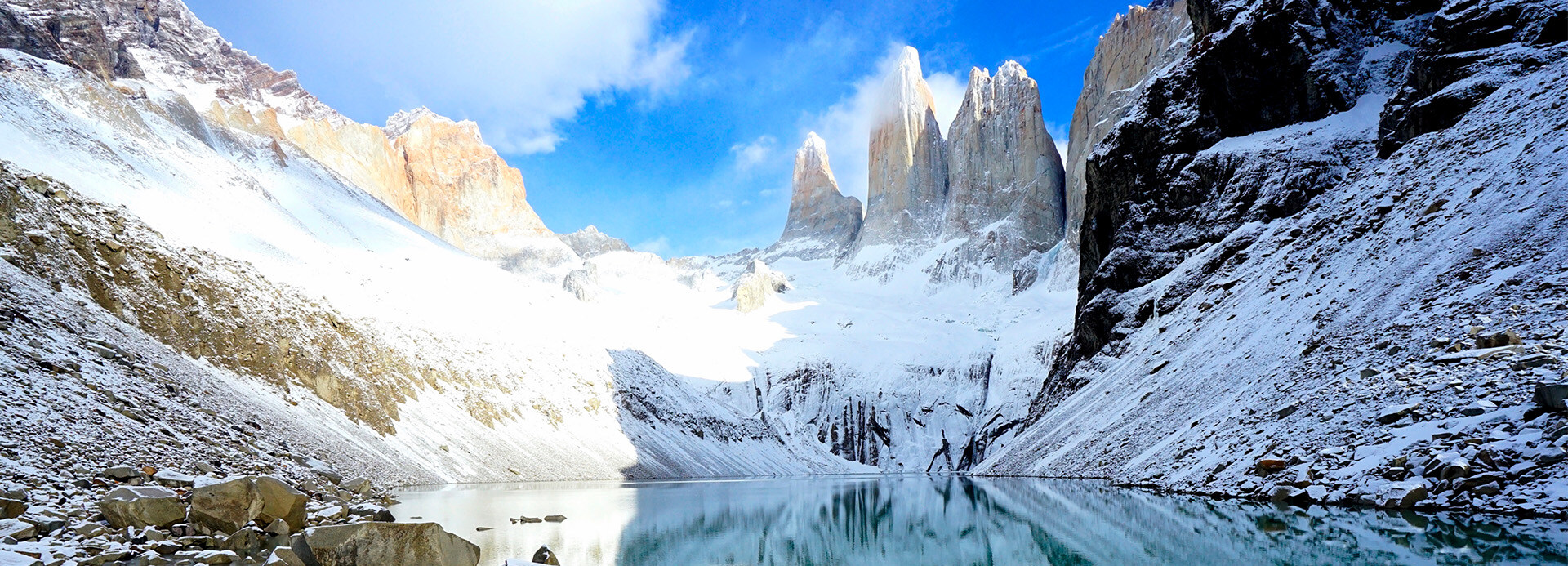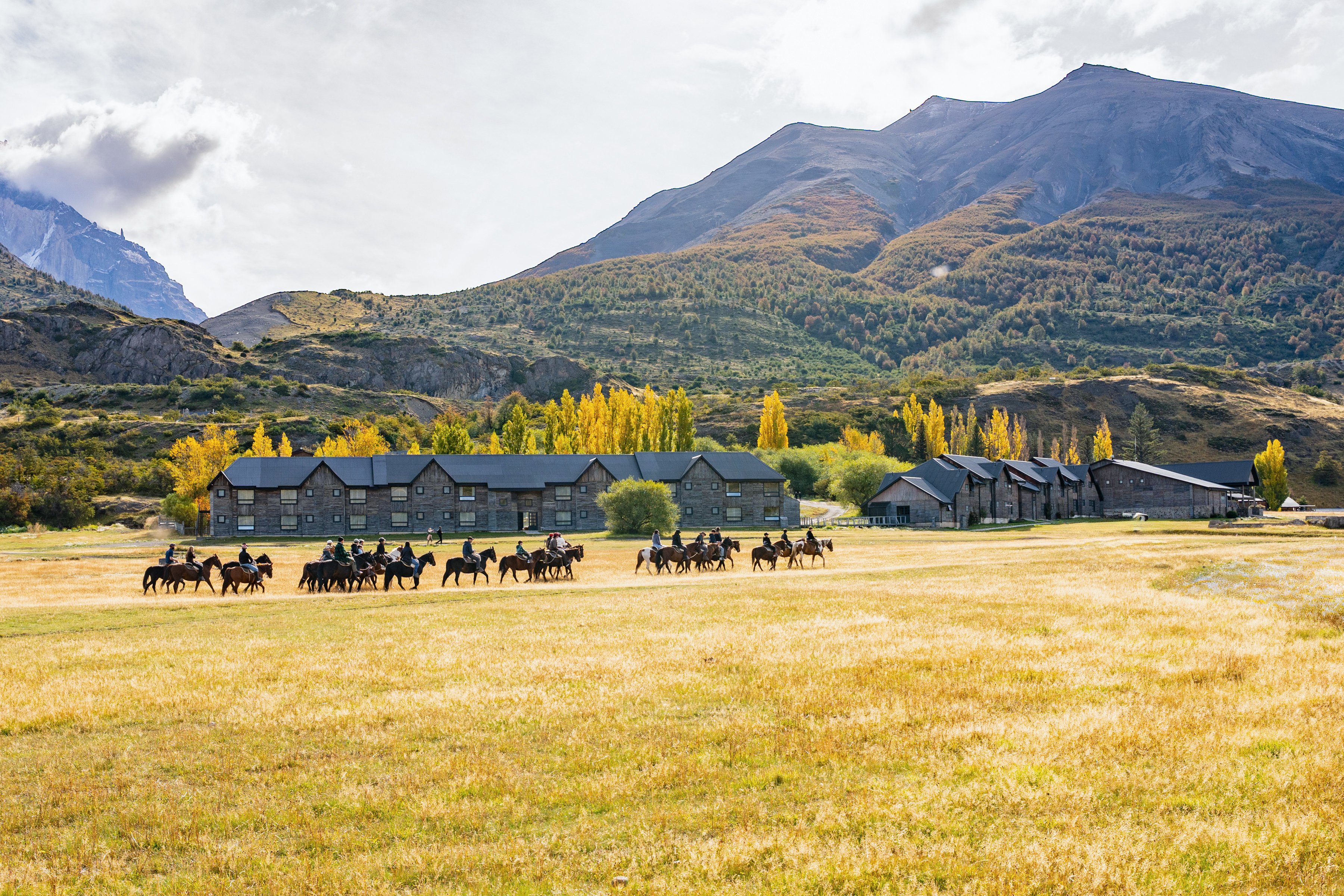Torres del Paine National Park
- 10 mins
Torres del Paine National Park is an international tourist destination, attracting people who love adventure tourism from all over the world to Chile’s Magallanes region in order to explore the national park that is home to the geological wonder of the towers, and to immerse themselves in the magic of Patagonian wildlife. Today, we’re going to tell you everything you need to know about this eighth wonder of the world.

Where are the peaks of Torres del Paine located?
In the southern tip of South America, in Chilean Patagonia, you’ll find the three most famous granite towers in the world, which give their name to the iconic Torres del Paine National Park. This park is located right near Chile’s border in the middle of the Magallanes Region and Chilean Antarctica, right in the province of Última Esperanza, or ’Last Hope’ province.
Torres del Paine National Park is almost two and a half hours from Puerto Natales, the nearest urban center. In this city, you’ll find several options for arriving at the park. For our guests staying at Hotel Las Torres, we offer an exclusive private transfer service in our comfortable vans, ensuring a safe and pleasant trip.
Arriving at the base of the towers themselves, the Base Torres, takes a few steps:
First, you will arrive at the Laguna Amarga Gateway, the main entrance to the national park. Here you’ll need to show your QR code in order to access the park– remember that tickets must be purchased in advance. Then, you’ll pass by our Welcome Center, where you can learn information about the local flora and fauna and how to take care of this vital ecosystem.
Now, the adventure begins. To start your hike to reach the towers, you must cross the ‘Central’ sector and pass by the Hotel Las Torres to take the starting point path marked by the bridge that rises over the Ascencio River. Then, you’ll cross the Ascencio Valley, Paso de los Vientos, and the Chileno Refuge where you can rest, have a coffee, and recharge your batteries in order to continue walking through the Bosque de Lengas birch forest, hike La Morrena, and finally reach the moment you’ve been waiting for: the Base Torres, or the base of the Torres del Paine towers.

How were the granite peaks formed?
The Torres del Paine stand out with the contrast between their dark rocks and their prominent light rocky bands. The dark rocks are sedimentary layers formed during the separation of the Gondwana supercontinent, a geological process that occurred millions of years ago. Gondwana, which was a supercontinent that existed in the Southern Hemisphere during much of the Paleozoic and Mesozoic eras, was formed from the merger of several continents, including what we now know as South America, Africa, India, Australia, Antarctica, and the Arabian Peninsula.
The lighter colored rocks, on the other hand, are intrusive igneous granites that were formed by settling into the sedimentary rocks, taking advantage of the weakness generated by the presence of the Otter River Fault. These geological structures are located in the southern region of Chile, in Chilean Patagonia, and have experienced movement over millions of years, influencing the configuration of the landscape and geology of the Patagonian region.
These rock formations were then exposed by tectonic movement and subsequently shaped by glacial action during the Pleistocene period. This gave rise to the distinctive angular shapes of the region’s mountain range, such as the horns, towers and ridges we see today, forming one of the world’s unique landscapes.

When was Torres del Paine National Park established?
The National Park was created on May 13, 1959 via the Ministry of Agriculture’s Supreme Decree number 383, then known as Lago Grey National Tourism Park. Just two years later, it received its current name: Torres del Paine National Park.
It’s been under the administration of the National Forestry Corps (CONAF) since 1973, and two years following that the park ranger corps have maintained a regular presence on the ground to care for and protect the park area.
In 1978, the park was declared a Biosphere Reserve by UNESCO’s Man and Biosphere Program (MAB).
This UNESCO program aims to promote biodiversity conservation and the sustainable use of natural resources through the designation of protected areas, known as Biosphere Reserves.
When a region obtains Biosphere Reserve status, its importance is recognized both for its ecological value and its relevance to the human communities that depend on these natural resources. These reserves are managed in an integrated manner, taking into account both biodiversity conservation and the sustainable development of the local communities that inhabit them.
.jpg?width=1024&height=512&name=CIRCUIT_O_X_3%20(1).jpg)
How many animal species live in the national park?
Local wildlife can be divided into two groups. Starting with the mammals, there are 25 species present in the park, among which we can highlight the puma, red fox, chingue, Geoffroy’s cat, and the huemul.
If you’d like more details about fauna in the park, we invite you to check out the following link. Here you will find information about the native animals that inhabit the area, and the importance of their conservation.
Regarding reptiles, you can find 6 types of reptile in Torres del Paine National Park, along with 3 types of amphibians and 6 types of fish.
In terms of flora, there are 274 species of plants that may be classified by Patagonian steppe, pre-Andean scrubland, Magellanic forest (predominantly the lenga birch), and Andean desert.
For more information about Torres del Paine visit our website, where you’ll also find the perfect accommodation to start your Patagonian adventure.




.jpg)